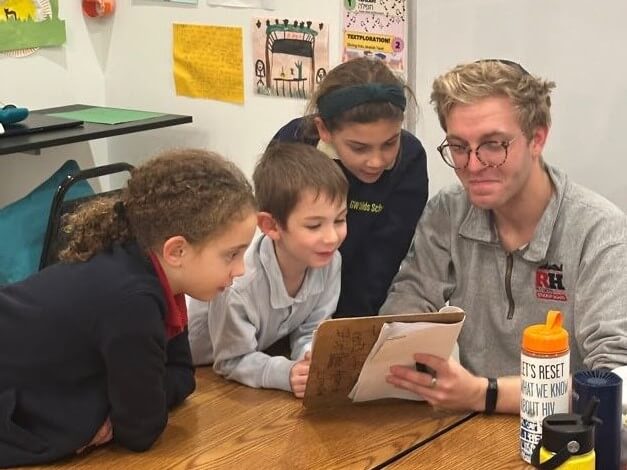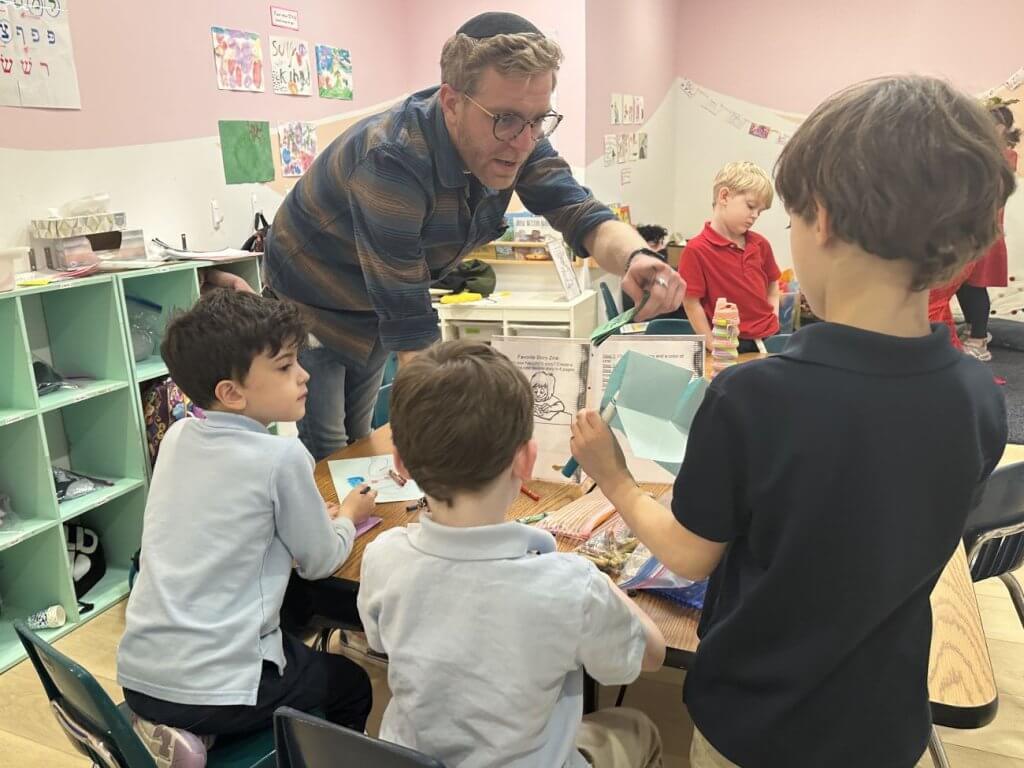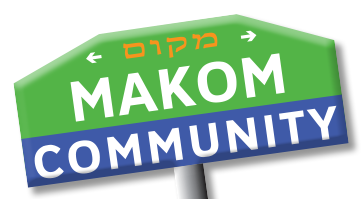
What does l’dor v’dor (from generation to generation) mean? How is Torah passed from generation to generation? Our final unit for the year is focusing on uplifting women’s voices and perspectives that are generally left out of the Torah and other Jewish texts. As a queer man I have also had the experience of feeling left out of certain spaces. Juxtaposing this unit with the story of Yosef and the Haggadah (the book that guides us through a Pesach seder meal) has allowed the Shorashim (1st-2nd grade) to examine how characters in the Torah might feel and empathize with the experience of being left out of a story where they are the main character.

I have particularly seen this come through during Shulchanot Avodah (project centers). Over the last few weeks, kiddos have been drawing their own midrashim (commentary) as comic strips where they are filling in gaps of the story in Torah with their own interpretations. This idea came from a lot of kiddos loving the Dog Man books and the Koren Graphic Novel Pesach Haggadah. When they learned that midrash was also written by people just like us they jumped at the opportunity to make their own. They’re excited to watch their thoughts come to life through a familiar story while getting to play a role in its telling. I enjoyed hearing kiddos say they would pay particularly close attention to those characters we don’t hear from at all as they grow up, so they can tell others about them.
Starting with the idea of tzedek (justice) at the beginning of the school year, re-telling the story of Yosef, seeing Bnei Yisrael (the Jewish people) go into Mitzrayim (Egypt), and exploring leaving Mitzrayim ourselves has given kiddos a sense of their agency within Jewish text and values to set up this last unit. I cannot wait to see what they stitch together and tell their friends and family about from generation to generation.

